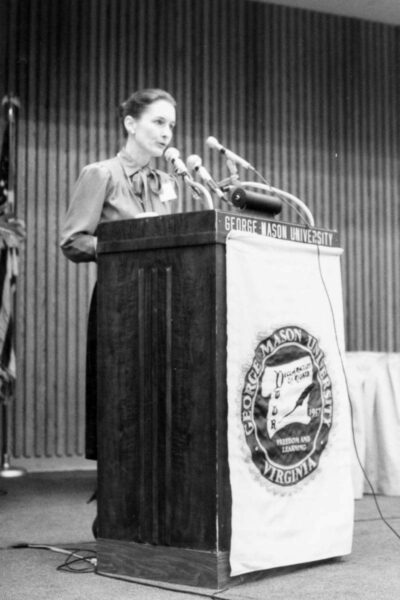Convening a watershed to save a national treasure
Before the existence of the Chesapeake Bay Program, Fran Flanigan helped bring folks together to restore the Bay

Here at the Chesapeake Bay Program, we are proud to play the lead role in bringing everyone together that has a vested interest in restoring and protecting the Chesapeake Bay. Guiding the collaboration of federal agencies, state governments, local elected officials, academic institutions and non-profit organizations in setting the policy and management actions for our nation’s largest estuary has been our charge since 1983.
But how was the Chesapeake Bay Program formed? Who was instrumental in bringing together federal and state officials to publicly state—for the first time—that the Bay needed serious help if it’s decline would ever be reversed?
Meet Fran Flanigan. In 1977, she joined the Alliance for the Chesapeake Bay as their Maryland coordinator, and after one year, was asked to step into the role of executive director, a position she held until her retirement in 2001.
Flanigan notes that the Alliance matched her passion for collaboration—the groups involved in its founding just wanted to connect with people. “They really wanted an organization that was able to talk about Bay science and communicate Bay issues, speak to ordinary people in a way that made sense to them, so you didn’t have to be a scientist to really understand what the issues were,” she explains.
From the very start, Flanigan made sure to involve everyone—engaging with farmers, watermen, business owners, environmentalists, scientists and concerned citizens—to bring attention to what was happening in the Chesapeake Bay. She called Pennsylvania farmers and businesses and brought them on boat trips out into the Bay. She organized educational workshops to teach folks how they could help.
“I think the Alliance’s most unique quality is its desire and ability to try to find consensus among differing points of view,” she recalls. “We came to the table…. we came to say, ‘We’re all in this together.’ We need to find solutions that are going to work for everybody. So, let’s try to figure it out.”
It may have been because of this unique position that the Alliance was asked, in 1983, to organize a conference that would bring together leaders from Maryland, Pennsylvania and Virginia as well as federal government representatives and other interested stakeholders to discuss the clean-up of the Bay. So many interested parties showed up, in fact, that the doors of the auditorium were shut after 700 people packed the room. And from that day-long conference, the Chesapeake Bay Program was born.
Flanigan and the Alliance continued to have a close relationship with the Bay Program, one that continues today. She explains that their relationship differed than that of other organizations because of their focus on consensus-building and communications. “We think we can find solutions, but we’re all going to have to give a little bit,” she cautions. “Beating each other over the head may be important for particular issues or causes, but in the long run, it’s not going to get us where we need to be.”
Although retired, Flanigan is still active in Bay issues. She currently lives in Baltimore and consults on environmental affairs with a variety of organizations, including the Maryland Port Administration, the Maryland Department of the Environment, the Waterfront Partnership and Baltimore County.
She says she is still quite motivated to be out there, educating about the Bay. “I’m not a promoter kind of person, but I try to figure out how to share information with people on issues that I think is important and try to set a good example.”

Comments
There are no comments.
Thank you!
Your comment has been received. Before it can be published, the comment will be reviewed by our team to ensure it adheres with our rules of engagement.
Back to recent stories